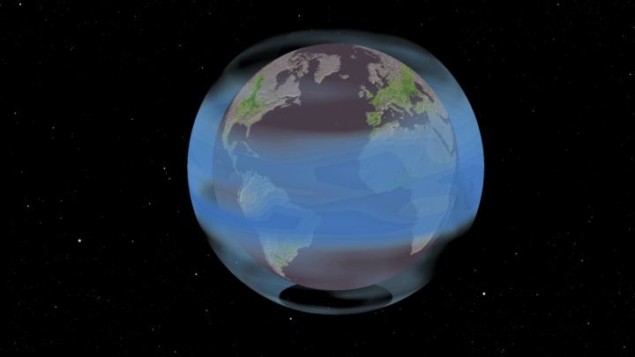
Managing solar radiation by introducing aerosols into the atmosphere may not protect crop yields from climate change. That’s according to US researchers who found that the reduced heat stress resulting from this geoengineering may not outweigh the harm to crop yield from its scattering of sunlight.
“Shading the planet keeps things cooler, which helps crops grow better,” says Jonathan Proctor of University of California Berkeley, US. “But plants also need sunlight to grow, so blocking sunlight can affect growth. For agriculture, the unintended impacts of solar geoengineering are equal in magnitude to the benefits. It’s a bit like performing an experimental surgery; the side-effects of treatment appear to be as bad as the illness.”
To come up with this assessment, Proctor and colleagues looked at the volcanic eruptions of El Chichón in Mexico in 1982 and Mount Pinatubo in the Philippines in 1991. These eruptions were big enough to send a large volume of stratospheric sulphate aerosols into the stratosphere; their cooling of the climate was the inspiration for proposed geoengineering techniques that artificially introduce such aerosols.
“The problem in figuring out the consequences of solar geoengineering is that we can’t do a planetary-scale experiment without actually deploying the technology,” says Solomon Hsiang, also of the University of California Berkeley. “The breakthrough here was realizing that we could learn something by studying the effects of giant volcanic eruptions that geoengineering tries to copy.”
El Chichón injected 7 Megatonnes of sulphur dioxide into the upper atmosphere, whilst Pinatubo introduced 20 Megatonnes. The sulphur dioxide later oxidized to form stratospheric sulphate aerosols that gradually spread around the globe and made the stratosphere more opaque for several years.
By looking at records of optical depth, the researchers assessed how the aerosols from the volcanoes altered global sunlight, and how this changed crop yields of maize, soy, rice and wheat reported to the UN Food and Agricultural Organization. Then they applied this crop yield model to a climate projection for the RCP4.5 emissions pathway and to a scenario with solar radiation management that uses sulphur dioxide injection to balance all additional manmade climate forcing after 2020.
Pinatubo reduced direct sunlight by roughly a fifth, increased diffuse sunlight by around the same amount and reduced total sunlight by 2.5%. It cooled the world by roughly 0.5°C and decreased yields of maize by 9% and soy, rice and wheat by nearly 5%.
The reduction in crop yield due to these changes in sunlight was a surprise to the researchers as some studies in wild ecosystems had found that scattered sunlight increased plant growth. The theory was that the scattering distributes light more evenly across the plant, redirecting it from sun-saturated leaves in the canopy to shaded leaves below. Diffuse light may, however, be less good at producing edible parts of plants.
The geoengineering scenario the researchers modelled cooled the planet by 0.9°C, reduced precipitation by 0.26 mm per month and increased cloud fraction by 0.0081 during the maize growing season. Average maize yields increased by 6.3% because of the cooling but decreased by 5.3% because of light dimming, the team showed. Once the researchers had accounted for optical effects, geoengineering had no statistically discernible effect on crop yields compared to the RCP4.5 scenario.
The teams believes this approach is the first use of real-world data to look at the consequences of geoengineering for a particular sector of the economy.
Hsiang reckons it’s possible to use the same method to investigate how geoengineering would affect other areas such as coral reef health, the net primary productivity of vegetation, skin cancer or worker productivity. This would provide more information on the potential risks.
Expanding his medical treatment analogy, Hsiang explains that this is like a doctor being informed about side effects. The fact that this study has highlighted important potential side effects, he believes, doesn’t mean we should rule geoengineering out as, like chemotherapy, the risks can justify the treatment.
Although many research groups are interested in field-work to trial geoengineering, we don’t have the same frameworks in place to deal with such experiments as we do for medical treatments, according to Hsiang in a press briefing. The researcher believes we need analogues to informed consent as well as institutional review boards.
Proctor, Hsiang and colleagues reported their findings in Nature.



